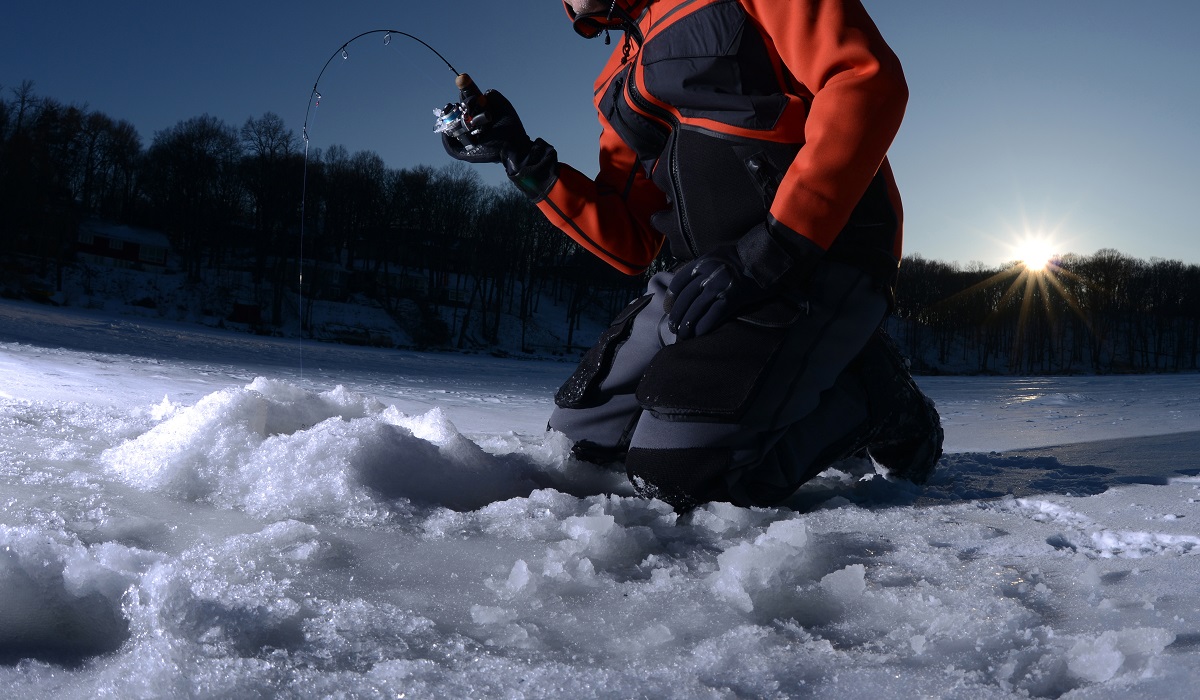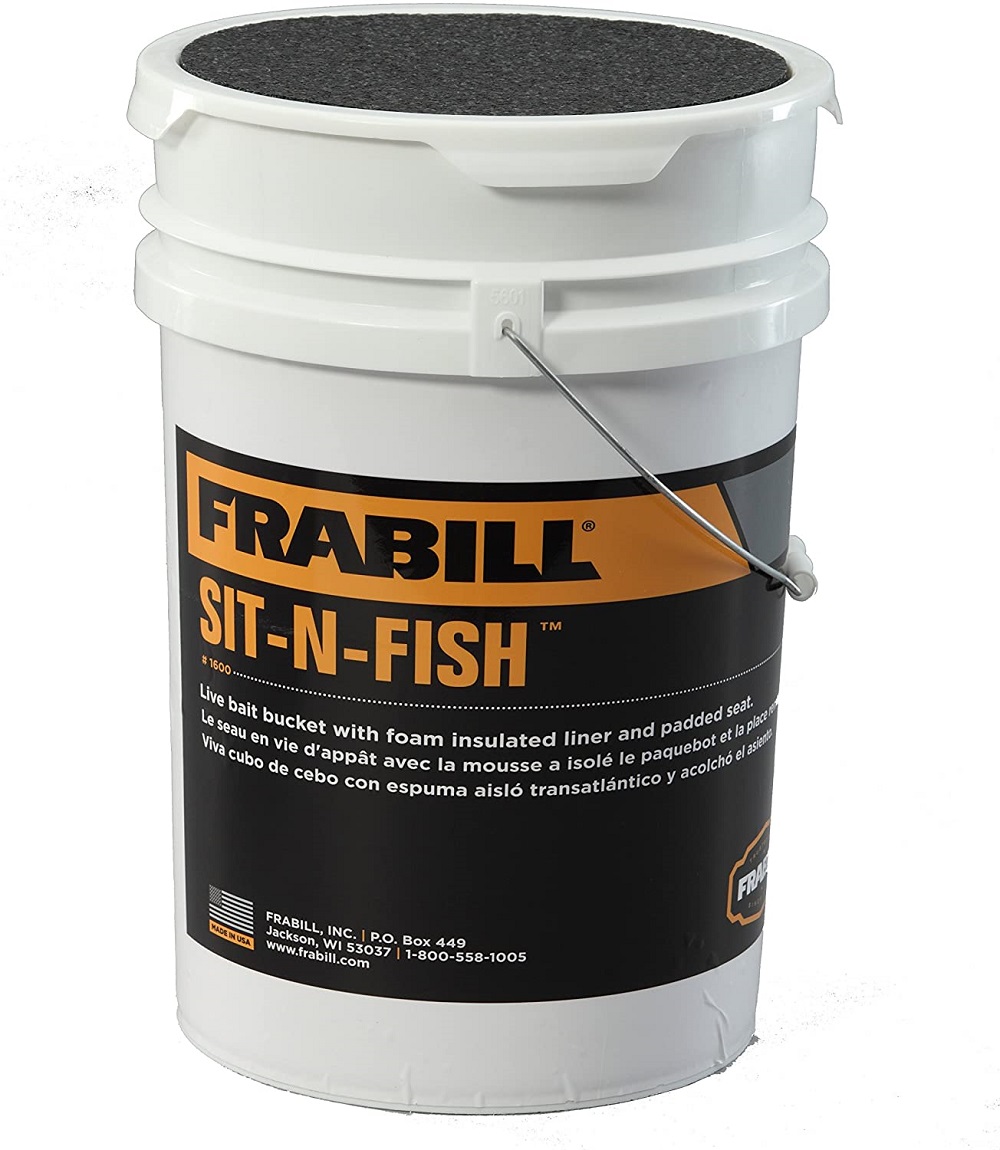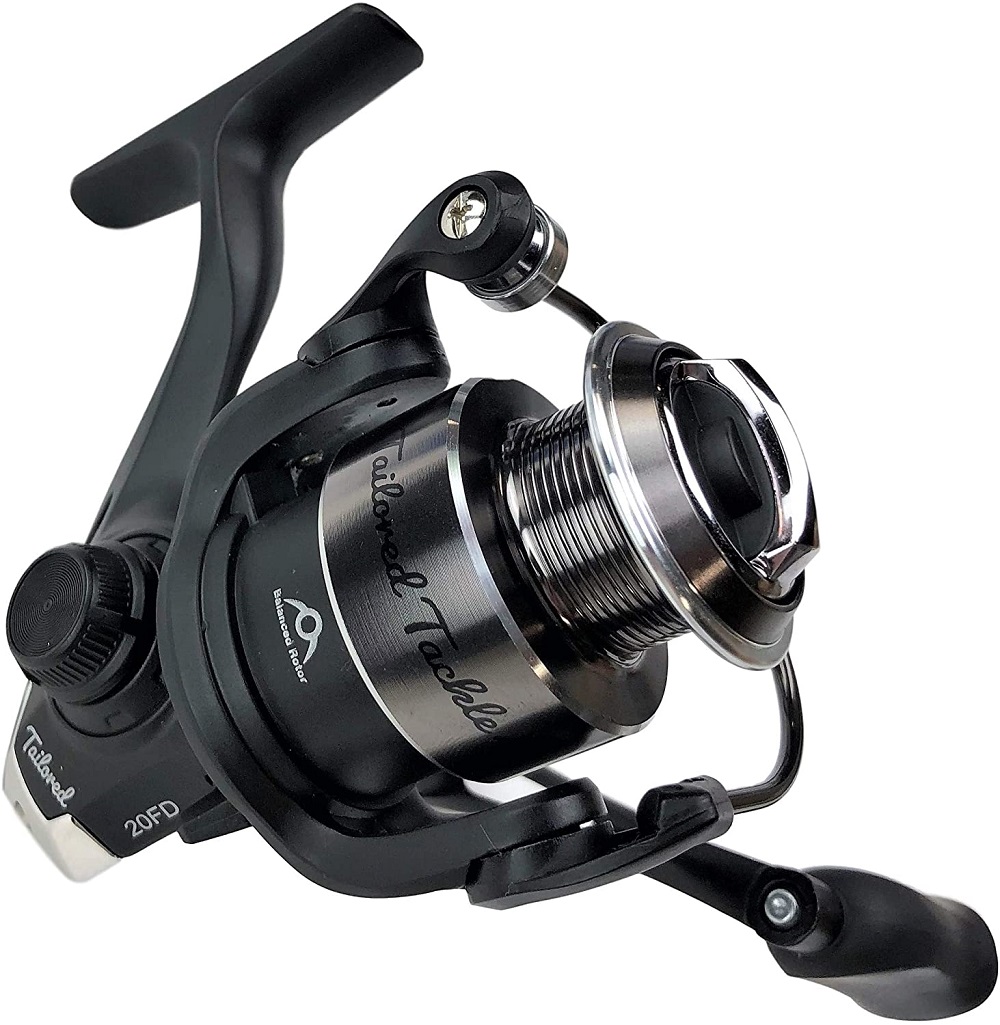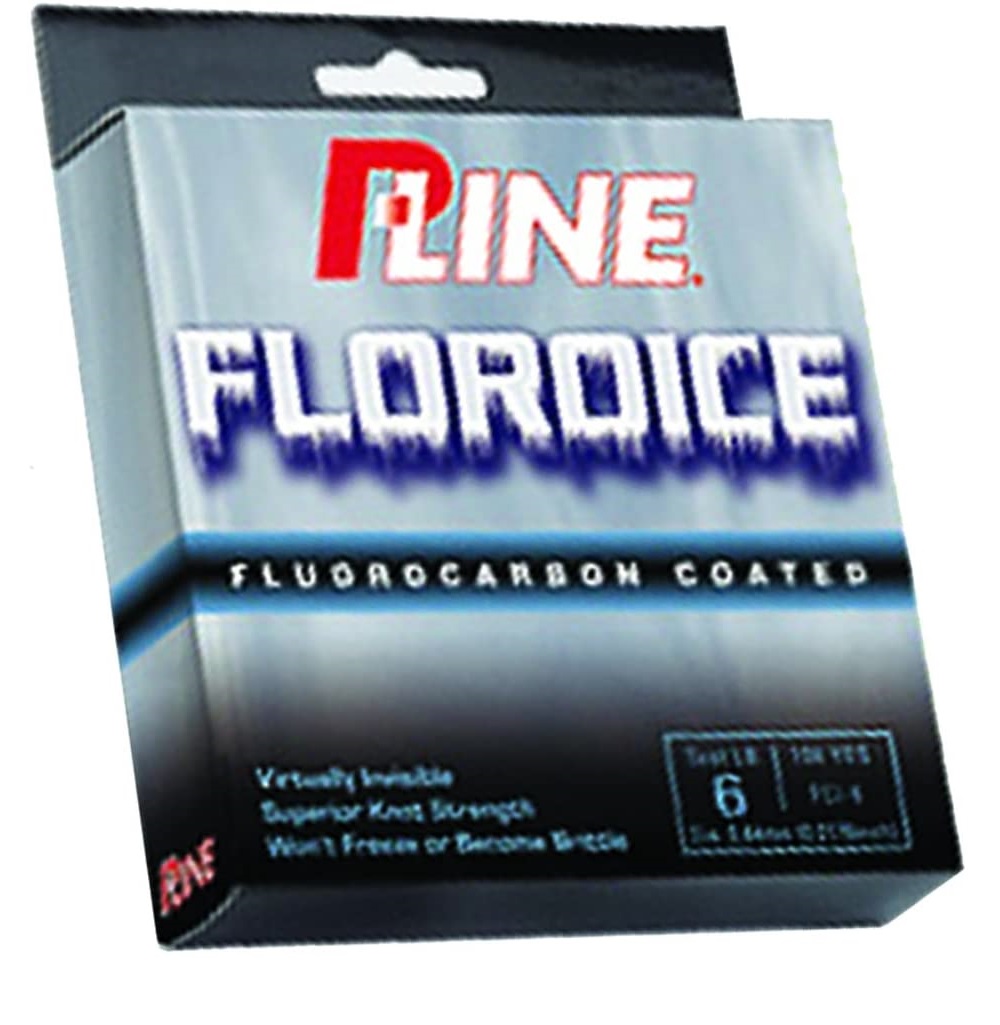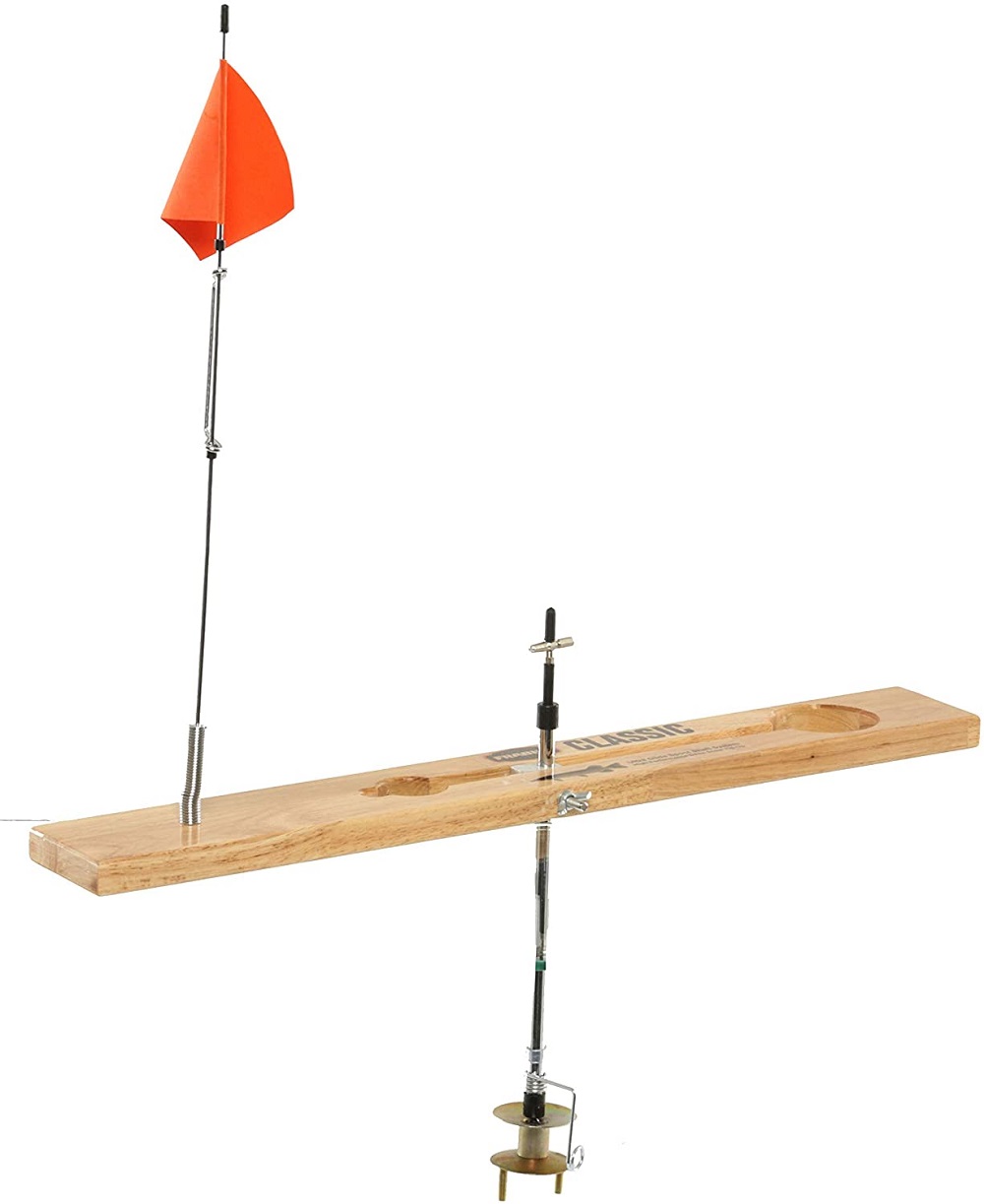OutdoorHub Reporters 12.24.20
Ice fishing is a favorite hobby for a lot of anglers. But it’s not for the faint of heart. Depending on your geographic area, the wind and cold can be brutal at times while you’re out ice fishing on a frozen lake or pond with few barriers to block the elements. But ice fishing can also be a lot of fun and it’s a great way to get outside when you have “cabin fever.”
If you live in a part of the country where bodies of water acquire enough ice to walk on, you’ve probably seen people out on the ice with pop up shanties (ice fishing tents), gas-powered augers and even snowmobiles when the ice is very thick. But you don’t need a lot of expensive equipment if you’re just starting out ice fishing.
If you’re thinking of ice fishing this year, or you’ve been out a few times and want to learn more, here are some beginner tips and 7 essential ice fishing products to set you up for a successful ice fishing trip.
1. Auger
You’re going to need a way to drill a hole in the ice to access the frigid waters below where the fish live. On popular lakes and ponds in the winter, you may be lucky enough to find a few empty holes left behind by other anglers, but you can’t always count on that. You should have your own tool to do the job. If you’re just starting out, a hand auger under $100 will work just fine for drilling small holes in the ice. The StrikeMaster MD-8 hand auger is a good choice.
StrikeMaster MD-8 Ice Fishing Mora Hand Auger
This hand-held auger is adjustable, so you can set it to your height for easier drilling. It takes a little bit of elbow grease if you’re drilling in more than 6 inches of ice, but once your hole is drilled, it’s worth it. This auger has high alloy carbon steel blades and its powder coated to reduce ice build up. If you’re just drilling a few holes, this auger is all you need. And it’s a lot lighter and cheaper than a motor-powered auger like the popular Eskimo Quantum Auger Series.
Pros/Inexpensive compared to other augers
Cons/It takes more work to drill a hole than motor-powered augers
Bottom Line/A good auger for beginners that’s adjustable and easy to use
2. Slush Scoop
After you drill your ice fishing hole, you’ll notice that there is a lot of slush (partially melted ice) covering the water below. A slush scoop allows you to easily remove the slush to keep your hole clear. You’ll need to use a slush scoop occasionally as ice will start to form over your hole as you’re fishing. The Frabill Ice Scooper is a good tool for the job.
This oversized ice scooper will make short work of removing slush from your ice fishing hole. It’s a step up from a small ladle-like scooper and is long enough at 30 inches that you won’t have to bend down much to scoop out the ice. The small strap on the end is nice, too, for porting it around.
Pros/Oversized and makes short work of removing slush
Cons/It is 30 inches, so it’ll take up more space than a small ladle scoop
Bottom Line/A good investment scooper, makes quick work of removing slush
3. Bucket
You’ll need something to sit on while you’re fishing. A bucket with a lid (and some padding on top) is a nice option for portable seating as it doubles as your seat and your ice fishing gear storage. The Frabill Sit-N-Fish will give you both a seat and storage.
Frabill Sit-N-Fish Insulated Bait Bucket
This insulated 6-gallon bucket is inexpensive and has a lot of nice features. It has a padded foam cushion built into the snap on lid, beverage holders on inner bucket lid and an insulated liner to protect live bait from extreme temperatures.
Pros/Seat and storage all in one
Cons/None
Bottom Line/Inexpensive bucket for sitting and storage
4. Ice Fishing Rod and Reel
When you’re out on the ice, you’re not casting like you with traditional fishing, so you’ll need a smaller version of the more traditional fishing rod and reel combination — known as a “jigging rod” (typically about 3 feet long with a small spinning reel.) Jigging is a technique in ice fishing where you drop your line into a pre-drilled hole in the ice and let your jig hook sink to the bottom. Then, you slowly raise your bait up about a foot off the bottom and “jig” (move your pole in tiny motions) up and down or side to side. Here’s a good choice for your first ice fishing rod and reel combo.
Tailored Tackle Ice Fishing Rod Reel Combo 28 in.
The Tailored Tackle ice fishing rod and reel combo is ideal for small to medium sized fish like Walleye, Perch, Panfish, Bluegill and Crappie. It has a comfortable and secure-feeling cork handle and a premium small five ball bearing system reel for a smooth feel in freezing temperatures. It also comes with an ice fishing book with chapters on how to use and maintain your ice fishing pole.
Pros/Combination kit ideal for catching a variety of species
Cons/Not ideal for large-species fish, pole could snap
Bottom Line/A great rod and reel combination for jigging with an ergonomic handle
5. Ice Fishing Line
Sure, you can use any fishing line for ice fishing, but you should consider using a fishing line specifically designed for cold water and more rugged conditions. Since you’re fishing out of a drilled hole, you’ll want a more rugged line so it doesn’t get ruined or even break from brushing against the side of your drilled hole as you’re reeling it in. Ice fishing line will also help with ice building up as you’re jigging or reeling in a fish. P-Line Floroice is a great inexpensive ice fishing line that can withstand the cold.
P-Line Floroice Clear Fishing Line 100 YD Spool
This fishing line is made specifically for freezing temperatures. It’s virtually invisible, incredibly strong and it won’t freeze or become brittle.
Pros/Inexpensive and built tough
Cons/None
Bottom Line/An invisible line that won’t freeze out on the ice
6. Tip-up
A tip up is a hands-free mechanical device that allows you to fish hands-free in multiple holes on the lake at the same time. Tip-ups are also known as “strike indicators,” “ice traps” or “tilts.” Tip-ups are easy to use. You can dangle a spool of line and hook (with bait) beneath your ice fishing hole. Then, when a fish strikes the bait, the submerged spool spins and trips a small pop-up flag above the ice. That fla signals that you have a bite. Frabill makes a good tip-up.
Frabill tip-ups have always held up well for me out on the ice and they’re easy to use. With a built-in flag, you’ll easily be able to see your tip-up across the ice. This wooden one is a nice choice and has large capacity metal spools and dual counterbalance crank nobs to prevent wobbling and false movement.
Pros/Durable and hold up well for multiple uses
Cons/Can be triggered easily if not adjusted right
Bottom Line/Easy to use tip-up that performs well
7. Ice Fishing Sled
Having an ice fishing sled will make your ice fishing experience much more enjoyable. Afterall, you’ll need to transport all of your ice fishing gear — like your auger, bucket, slush scoop, tackle box, fishing rods and tip-ups — out to your fishing spot across the ice. A small fishing sled makes that transporting process a lot easier. I always carry extra layers, drinks and snacks on the ice. A sled is super easy to use and glides well across the ice. The Shappel Jet Ice Fishing Sled is a nice durable option.
This Shappell ice fishing sled is easy to pull by hand and rugged enough to transfer even heavy items like firewood. It has a rugged polyethylene construction and measures L 54” x W 24”, so it’ll easily fit all of your ice fishing essentials.
Pros/Large sled with an easy-to-pull design
Cons/None
Bottom Line/Rugged sled big enough to fit your ice fishing essentials, easy to pull
8. *Bonus Ice Fishing Gear Recommendations*
For hooks and tackle, you can use your normal set up (just know what kind of fish you’re targeting) or pick up a hook and tackle kit like the RUNCLE Fishing Terminal Tackle 148/170 pcs tackle box.
For bait, call or visit your local bait shop. Do your research ahead of time so you know what fish are in the body of water you’ll be fishing, and prepare accordingly.
You’ll also want to have a way to cut your line if a fish gets away with your hook. Consider taking clippers or pliers. I like small clippers with a lanyard that are easy to use, small and harder to lose like Berkeley stainless steel line clippers.
One of my never-leave-home-without-them essentials when I’m heading out on ice are my ice cleats that pull on over my boots. I’ve fallen way too many times when I didn’t have them. These make me secure on the ice and add an element of safety to any ice fishing trip.
You’ll also want to wear warm clothing and waterproof boots in freezing temperatures. I wear my trusted Cabela’s Zone Comfort Trac Insulated Rubber Hunting Boots with 800 gram insulation and a nice ridge for attaching and securing my ice cleats. I’ve found these men’s boots hold up a lot better than boots made for women. And they’re warmer so I can stay out longer on the ice without my feet getting cold.
If you’re interested in learning more about ice fishing, you can learn a lot about the sport in Tim Allard’s book, “Ice Fishing: The Ultimate Guide,” which was recommended to me by an avid angler here in my home state of Montana.
About the author
Suzanne Downing is an outdoor writer and photographer in Montana with an environmental science journalism background. Her work can be found in Outdoors Unlimited, Bugle Magazine, Missoulian, Byline Magazine, Communique, MTPR online, UM Native News, National Wildlife Federation campaigns and more.
Pros/
Cons/
Bottom Line/
We are committed to finding, researching, and recommending the best products. We earn commissions from purchases you make using the retail links in our product reviews. Learn more about how this works.
